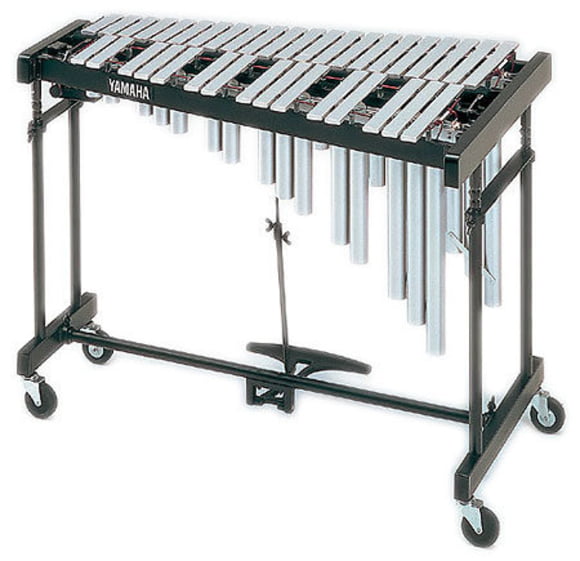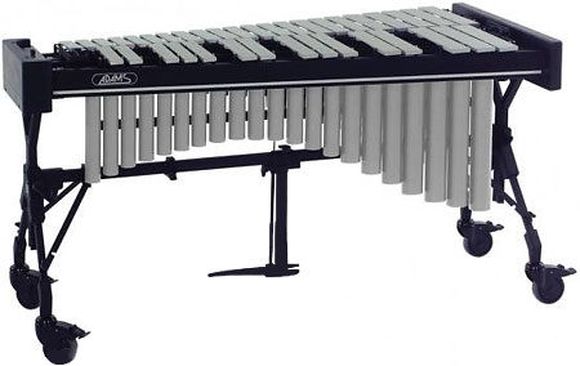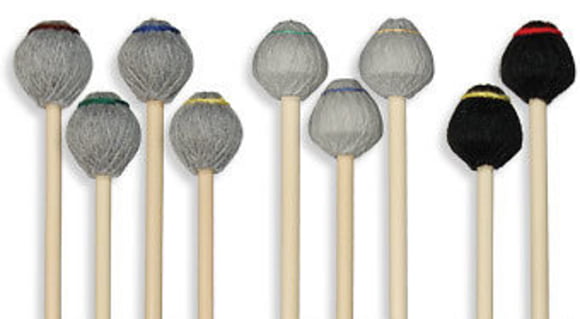4. Vibraphone
The vibraphone, also known as vibes, is a popular member of the percussion family. While vibraphones are most commonly used in jazz groups (combos and big bands) well include them in our discussion of mallet percussion instruments since they are sometimes included in band and symphonic works.

Vibraphones produce a soft, round tone that can sustain for far longer than a xylophone or marimba. They use aluminium bars that resonate for longer than the wooden or synthetic bars found on those other instruments. The vibraphones upper bars (accidentals) do not overlap the lower natural bars. Student vibraphones often have bars of identical widths; professional vibraphones have bars of graduated widths, with wider bars for lower notes. These instruments are capable of producing richer tones than student models. Vibraphonists who are accustomed to the richer tones of professional models never want to go back to a student model. For this reason, a serious student might consider a professional model if their budget allows. After all, its always cheaper to buy only once.

The vibraphones bars can be made with a matte or shiny finish. Shiny surfaces can look impressive, but under stage lighting, they can reflect light back into the performers eyes. For this reason, matte bars may be preferred.
Vibrato
Vibraphones also have disks in their resonating tubes that rotate at varying speeds, opening and closing the resonators, resulting in what most vibraphonists term vibrato. Actually, vibrato is a variation in pitch, so this effect should be called tremolo, meaning variations is volume. A small electric motor controls the rotation of the disks and the speed of the rotation can be selected. Some less expensive vibraphones have specific speeds set in steps. More professional units may have stepless motors that allow subtler variations though either type can work well. In the past twenty years or so more advanced computer controlled servomotors allow even greater control of the rotation of the disks.
The vibraphone has a pedal that releases a dampening bar (usually covered with felt or similar material) that otherwise will dampen the instruments sustain. Like a piano sustain pedal, pressing the pedal allows the bars to sustain freely and releasing it dampens the bars. Some gel-filled damper pads are available that can simplify instrument maintenance.
Mallets
Fortunately, the vibraphone may be played with marimba mallets. Some manufacturers offer specific models for the vibraphone with slightly shorter handles. Many players use marimba mallets on the vibraphone, but like the marimba, never use metal or plastic mallets on a vibraphone or you will dent and damage the bars. Also, harder mallets may not work as well on the vibraphone since they produce less sustain and a harder, sharper sound. Like other mallets, the handles tend to be made from rattan, birch or fibreglass. Vibraphonists tend to play with either two or four mallets at a time depending on their personal playing style and the requirements of the piece.





